DMR
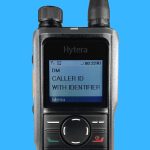
Benefits of Caller ID with Identifier
In earlier blogs, we discuss the DMR digital two-way radio features Private Call, Encryption and Text Messaging. In this blog, we are introducing another feature of DMR digital two-way radios named Caller ID with Identifier. This feature can be programmed in display and no display radios.
One of the main benefits of Caller ID with Identifier is knowing who is calling on the radio. Besides that, the ID list also allows you to identify what the ID means: a location or a job title. This DMR feature becomes essential in emergency situations. Knowing who sends an emergency call and where this person is located can be time and lifesaving.
Another benefit of programming the digital radios with the Caller ID with Identifier is that this feature helps find faulty radios. If you see on your radio display that another user has started a call, but you don’t hear anything, the radio transmitting may have a bad microphone or bad accessory. On the other hand, if you are calling a radio user and the person doesn’t respond, it could mean that that radio has a bad speaker, bad accessory or the volume is turned down.
We don’t recommend using the person’s name as the Caller ID Identifier. By doing so, every time a radio user leaves the organization, all the radios would have to be reprogrammed to include the new radio user’s name. This will be time-consuming and also affect your budget.
We’ve made a video on this DMR feature where we explain the uses and benefits of the Caller ID with Identifier feature in more detail. We hope you enjoy the video and find the information we provide useful.
If you have any questions or would like to receive more information on this or other DMR features, please call at 1-800-268-4098 or email us at info@metrotalkinc.com.
DMR ENCRYPTION
Protect your two-way radio communications from unwanted listeners. DMR commercial digital radios offer a feature called Encryption that prevents others from listening to your conversations.
There are two types of encryption: Basic and Advanced. Radio manufactures usually offer the basic version as a free option. For the advanced version, they require a fee.
The DMR encryption is a programmable feature. All radios that need to communicate with each other have to be programmed with the same encryption information.
Not all two-way radio manufactures use the same encryption format. When you are adding new radios to your fleet, and you are using encryption, make sure they match the encryption format of your old radios.
Check this YouTube video we created to see a few examples of how the DMR feature works.
Please contact us if you have any questions or need additional information. One of our two-way radio experts will be happy to assist you.
Read More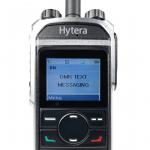
Send Text Messages with DMR Radios
One of many benefits of DMR Digital two-way radios when compared to Analog radios is the ability to send text messages to just one individual or to a group without switching channels.
Canned and Free Style Text Messaging
DMR Digital radios allow you to use two types of text messaging: Canned Messaging and Free Style Messaging. For sending both types of messages you need a two-way radio with display and while you can send canned messages with a radio with limited keypad, for free style messages you need a radio with a full keypad.
Two-way radio manufactures limit canned messages and free style messages to a specific number of characters and a limited number of texts per radio. You can customize canned messages, but they must be programmed at the time of purchase. Radio users will not be able to change canned messages.
On the other hand, Free Style Messaging offers you the choice to send your own message, send a canned message, modify and send a canned message, and save sent messages as a draft to use in the future or change them if needed.
All the text messaging features are easily accessible by navigating the menu in the radio using the keypad, like on a regular phone.
Videos on how text messaging works on DMR Digital Radios
We created 3 videos that explain in more detail how the text messaging feature works on DMR Digital Radios. On these videos we show text messaging using Tait, Hytera and RCA two-way radios.
Please, contact us if you need more information about the Text Messaging feature of DMR radios or any other feature. One of our two-way radio experts will be happy to help you select the right radio for your needs.
Read MorePrivate Calling on DMR radios
Organizations such as hotels, schools, and manufacturing plants use two-way radios for their daily operations. Just pressing a button to talk to a group of employees is simple and efficient. Problems occur when a manager wishes to talk to one employee. A standard feature in DMR digital radios called Private Call solves this issue.
How Private call works
Private Call allows a radio user to place a call to just one user without changing the channel. This feature is essential in security or emergency situations when just one person needs to receive the orders. It’s also key in any other situation that requires a private conversation between two radio users.
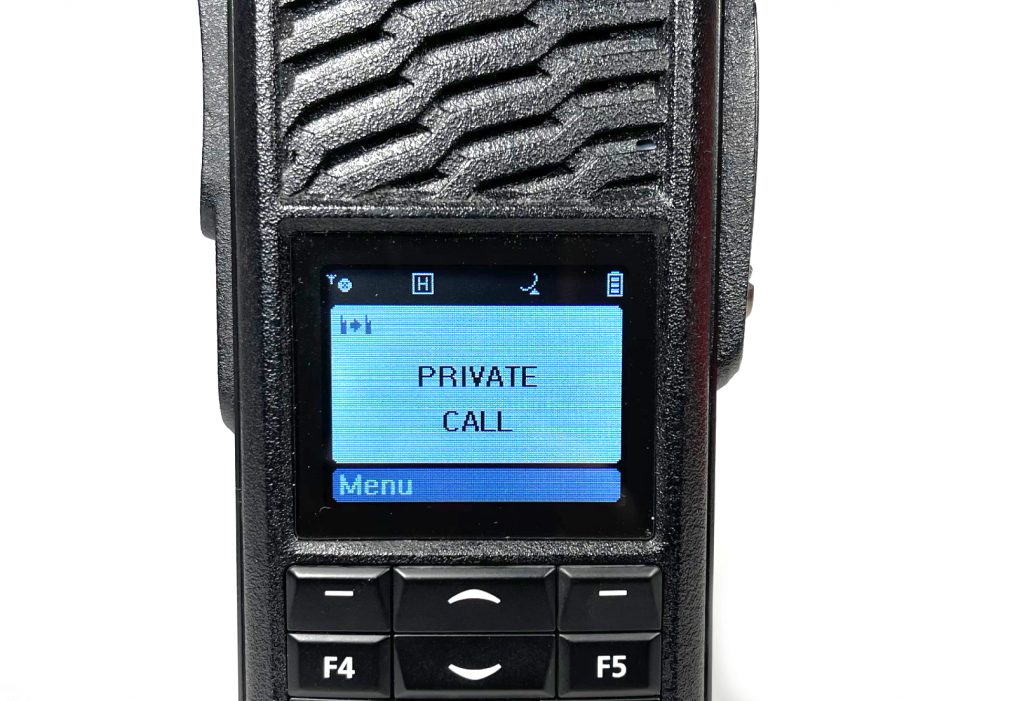
The Private Call feature works best on two-way radios with a display and a keypad. The process is as simple as using the MENU button to select the receiver’s name from a contact list pre-programmed into the radios and then, press the push to talk button.
The DMR Private Call feature also works on radios without a display and a keypad. However, since there is no possibility to see or scroll from a list, only the side or top buttons can be pre-programmed to privately call a specific person such as a supervisor or team leader.
Video showing Private Call on DMR radios
Check the video below from our team of experts at Metrotalk. It shows how the Private Call feature works on some of our most popular DMR two-way radio models : the Tait TP3300 and the Hytera BD552i, PD662i and PD562i.
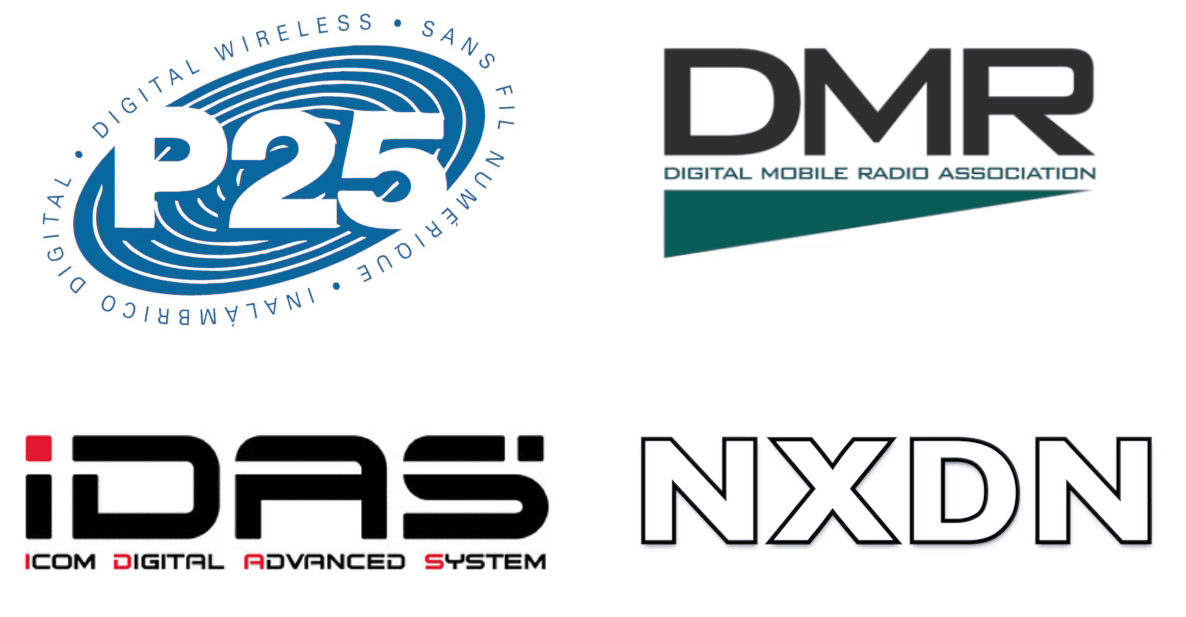
Are my two-way radios DIGITAL?
If you recently bought two-way radios with any of the following DIGITAL standards listed on the box: P25, DMR, IDAS or NXDN, the radios are DIGITAL. If it does not list any of the noted DIGITAL standards, then the two-way radios are ANALOG only.
Why is this important? Well, many two-way radios prominently list a technical filtering feature by the common marketing name of DCG (Digital Channel Guard) or DPL (Digital Private Line) with DPL being the most widely used. The real name of that filtering feature is CDCSS (Continuous Digital Coded Squelch System). Since the word DIGITAL is in the description, it may give the impression that it is a Digital radio, but it is not.
CTCSS and CDCSS are a set of filters that reduce interference from other users when sharing the same frequencies. The CTCSS codes are an older set of filters used in the 50’s when two-way radios were just coming into use.
ANALOG only radios will just list the power rating, channel capacity, CTCSS and CDCSS as part of the selling features. ANALOG only two-way radios will never be able to work in Digital mode. They will not have the advantage of improved battery life, range, PRIVACY, caller ID and other features and functions true Digital radios have.
ANALOG and DIGITAL two-way radios of equal quality are almost equal in price and Digital radios are compatible and work with ANALOG radios. So the next time you are looking to buy two-way radios pay attention to the label and remember that if it does not say P25, DMR, NXDN, or IDAS, it is not DIGITAL.
Call 1-800-269-4098 or contact us if you need additional information or need help choosing your two-way radio equipment.
Written by: Frank Sampedro
References:
Read More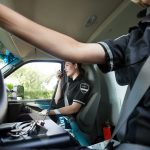
3 Real Life Experiences of Two-Way Radio Success
Doing research on two-way radios will give you a lot of product information, but it just isn’t the same as hearing about a real life experience. Here we look at three different instances when professionals invested in two-way radios, the goals they hoped to achieve, and their level of satisfaction to help you learn more about what features are right for you.
A two-way radio solution for Carroll County, TN emergency services
Carroll County emergency services had been using a dated radio system to communicate that just didn’t give them access to all areas in the six hundred square miles that they service. When Terry Bradshaw saw it was time to update, they choose the DMR Tier 3 800MHz trunked network that provided them with capabilities beyond their expectations.
They were able to communicate in areas that they never had before, allowing them to respond faster and more efficiently. Plus, with encrypted communication, they were able to keep sensitive issues secured. While the Carroll County firefighters knew the product was of premium quality, they were still pleasantly surprised with the multitude of features. Click here to read more.
Synchronizing safety efforts with superior two-way radios in Kansas City
When an electrical company in Kansas City saw the flaws in their current radio system, they decided to take action. The primary issue was three crews that were regionally based were all using different radio systems, and when they would have to come together for storm situations, communication was a major problem. Coverage was also problematic because there were locations that there was little or no way to communicate.
Using past experiences and quality evaluations, they choose the DMR Tier 3 trunked network and haven’t looked back. Staff members are more confident when it comes to communication because the two-way radio system is reliable and always available. Response time became faster, and the ability to service the community improved tremendously. More details.
Premium communication for events at the University of Connecticut
The University of Connecticut has some pretty serious stadiums for sports, trade shows, banquets, and much more, and when these events were taking place, the staff wanted to find a better way to communicate. Wireless communication is essential for the arena setting, and cell phones couldn’t handle the job because of the large number of people in attendance that were also using devices.
Dropped calls were an issue until they were introduced to the Hytera products and PD7 Series. They soon discovered that they could have seamless communication, even over the noise level of the crowds. The system was cost-effective and helped them host events for tens of thousands of people safely and efficiently. Learn more here.
If you’re ready to experience seamless, secure, and reliable communication, talk to the experts at MetroTalk Inc. about product choices and testing options. Let us be your communication solution, so you don’t miss a single piece of information in your day due to failed calls or locations challenges.
Read MoreDifference between P25 and DMR two-way radio systems
P25 is the digital standard for public safety grade two-way radios. Offering very high levels of encryption, trunking formats, GPS and over the air programming combined in an industry wide accepted format. This format guarantees that, if the two-way radio is P25 standard, it will work with other P25 standard two-way radios even from different manufacturers. This allows Police, Fire and other public safety departments to be able to communicate with each other during an emergency, yet maintain their private networks during day to day operations.
DMR (Digital Mobile Radio) is the private industry version of a digital standard. Radios from multiple vendors designed with the DMR standard are guaranteed to work with each other. A Tait DMR two-way radio will work with a Hytera as well as Vertex Standard and MOTOTRBO. This offers flexibility as well as healthy competition when customers are trying to decide which product to purchase. Offering features such as one to one, one to all, group calls, GPS and text messaging, the DMR standard creates a new level of utility for the two-way radio.
DMR repeaters are designed to allow two users to share the same repeater at the same time without interference. This provides companies a two for one feature. Presently in analog operation one repeater is required for each group.
DMR has also opened the door for software designers to develop software products that will work with the radios. Just like smart phone applications, DMR applications are now offering value added features such as work flow reports and trouble tickets. With all these features available to the user, DMR still provides for analog communication. This guarantees a smooth migration with older legacy radios that customers may not be able to replace now.
Read More